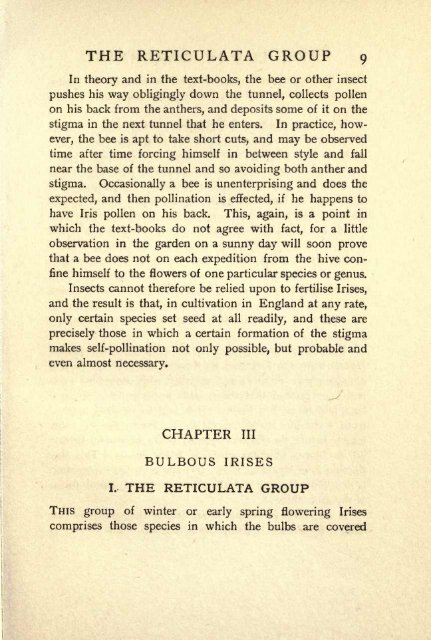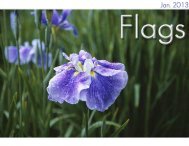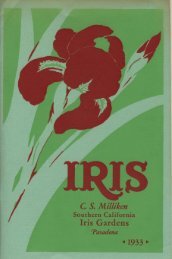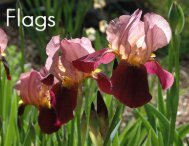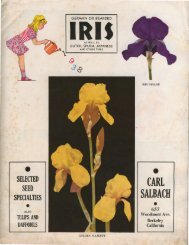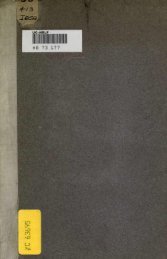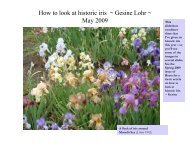Irises - Historic Iris Preservation Society
Irises - Historic Iris Preservation Society
Irises - Historic Iris Preservation Society
You also want an ePaper? Increase the reach of your titles
YUMPU automatically turns print PDFs into web optimized ePapers that Google loves.
THE RETICULATA GROUP 9<br />
In theory and in the text-books, the bee or other insect<br />
pushes his way obligingly down the tunnel, collects pollen<br />
on his back from the anthers, and deposits some of it<br />
on the<br />
stigma in the next tunnel that he enters. In practice, however,<br />
the bee is apt to take short cuts, and may be observed<br />
time after time forcing himself in between style and fall<br />
near the base of the tunnel and so avoiding both anther and<br />
stigma. Occasionally a bee is unenterprising and does the<br />
expected, and then pollination is effected, if he happens to<br />
have <strong>Iris</strong> pollen on his back. This, again, is a point in<br />
which the text-books do not agree with fact, for a little<br />
observation in the garden on a sunny day will soon prove<br />
that a bee does not on each expedition from the hive confine<br />
himself to the flowers of one particular species or genus.<br />
Insects cannot therefore be relied upon to fertilise <strong><strong>Iris</strong>es</strong>,<br />
and the result is that, in cultivation in England at any rate,<br />
and these are<br />
only certain species set seed at all readily,<br />
precisely those in which a certain formation of the stigma<br />
makes self-pollination not only possible, but probable and<br />
even almost necessaryĊHAPTER<br />
III<br />
BULBOUS IRISES<br />
I. THE RETICULATA GROUP<br />
THIS group of winter or early spring flowering <strong><strong>Iris</strong>es</strong><br />
comprises those species in which the bulbs are covered


